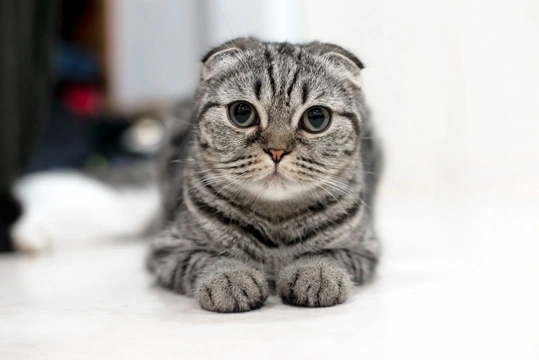
Could your cat be allergic to their cat litter?
Cats tend to be fairly robust and hardy animals despite their small size, and they are less prone to suffering from allergies and sensitivities than dogs are. However, when cats do suffer from allergies, it can also be harder to get to the bottom of their symptoms, and identify the allergenic trigger in place – and even allergen testing isn’t an exact science that will always produce definitive results in cats.
This means that identifying the source of your cat’s allergy and where possible, removing it, will often come down to a process of trial and error – and given the fact that virtually any substance or compound that you can imagine can be a potential allergen, this can be very difficult.
One commonly overlooked area of your cat’s life where an allergenic trigger may be lurking is your cat’s litter tray – and cat litter and different litter products and treatments can cause allergies in some cats, particularly when you take into account how many different types of cat litter are on the market.
In this article, we will look at some of the different types of cat litters and litter treatments and their potential risks as an allergen. Read on to learn more.
Corn and wheat-based litters
Corn and wheat-based cat litters have only been available in the UK for a few years, but are fast becoming very popular with cat owners. They are highly absorbent, clump nicely for easy scooping, and can be flushed down the toilet as they are organic products that dissolve and break down in water.
However, if your cat is sensitive to grains in their diet, then corn, wheat, and other grain-based cat litters should be avoided, as the dust from such litters as well as direct contact can trigger allergies.
Scented, coloured litters
Cat litter trays aren’t renowned for smelling pleasant – and there are a large number of cat litter products on the market that contain colourants and perfumes to try to mask the smell and appearance of the litter tray.
However, scented and coloured litters are not only a potential allergenic trigger for sensitive cats, but perfumed cat litter may well put your cat off using the litter box entirely, as the strong smell is not pleasant for your cat. Clean the tray out regularly and disinfect it weekly rather than trying to mask smells!
Cat litter deodorant powders and sprays
You can also buy scented sprays and powders to use with cat litter to produce the same scent masking effect as litters that are fragranced – and these are another bad idea for the same reasons.
Cedar pellets
Different types of wood-based litters in chip or pellet form are often popular with cat owners, but it is important to know what type of wood the litter itself is made from. Cedarwood cat litter pellets can be irritating to the skin of sensitive cats, leading to the risk of atopic dermatitis and other allergenic symptoms.
Pine wood pellets or shavings
Pine wood shavings contain oils that can irritate your cat’s skin, in much the same way as cedar pellets can. This can lead to localised skin reactions and/or respiratory symptoms and other allergy symptoms too, as well as causing a risk of your cat ingesting the oils if they lick their paws after using their litter tray.
Clay-based litters
Clay-based cat litters are a reasonably inexpensive choice of cat litter that many owners buy, but the clay can stick to your cat’s paws and lead to a risk of ingestion. Some cats are also sensitive to contact with this type of clay, so try changing out your cat’s litter for a more neutral alternative and see if they improve.
Generic grit cat litter
Non-clumping grit cat litters are also very cheap and easy to buy, and don’t usually cause contact allergies in and of themselves. However, they do also tend to be very dusty, which can cause respiratory symptoms in cats with asthma or allergies, particularly when your cat stirs up the litter and generates dust whilst using the tray.
What is the best cat litter for a cat with allergies?
As mentioned, any substance can be a potential allergenic trigger, and so there is no one size fits all solution to finding the best cat litter for a cat with allergies. However, choosing a litter than is unscented, low in dust and not composed of anything oily is a good start, and unscented silicone or crystal cat litters usually tick all of these boxes.
If you are changing your cat’s litter in an attempt to identify and remove an allergen, remember that it can take some time for allergy symptoms to settle down before you will see an improvement, so give it at least a couple of weeks with the new option and keep a record of what you try, when you try it, and how your cat’s symptoms improve or worsen.



